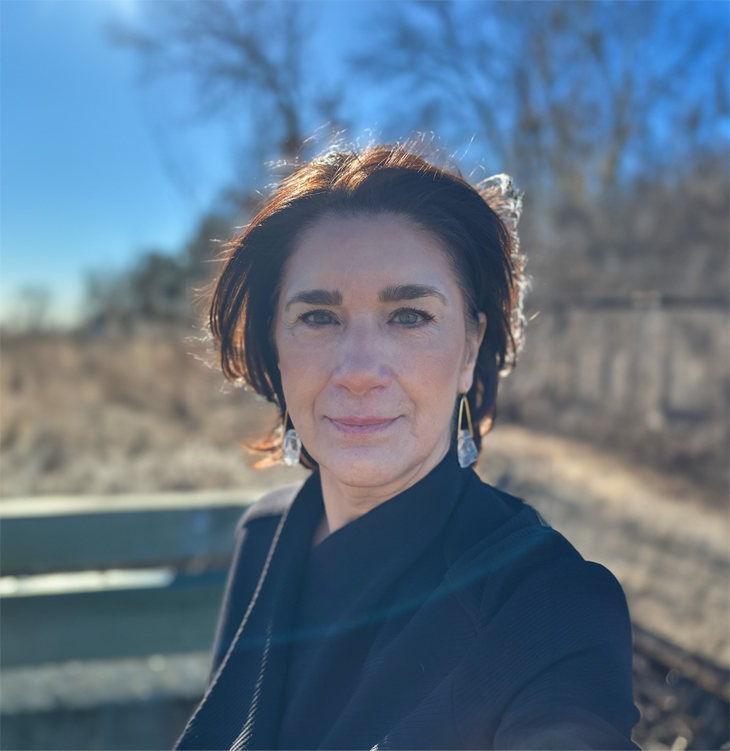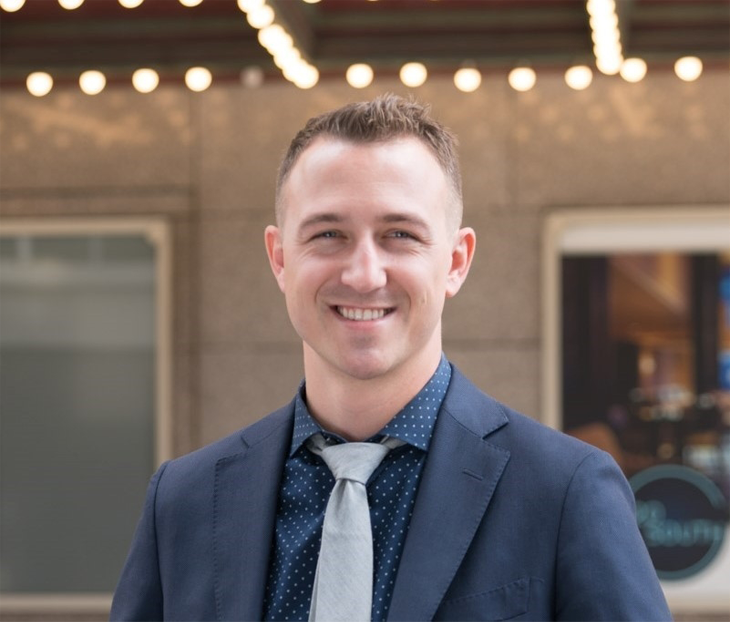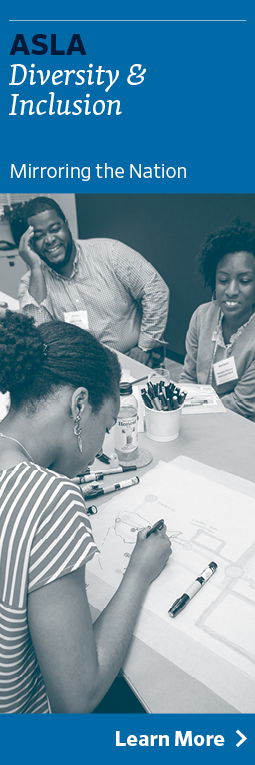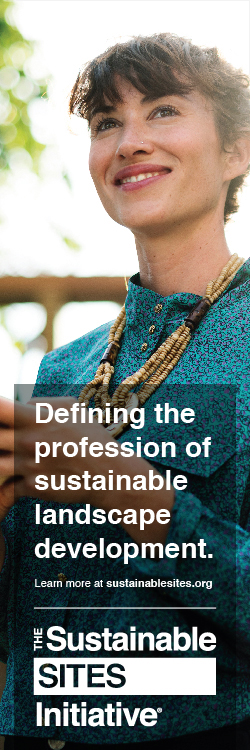President-Elect Candidate Forum – Question 3
3/31/2024Leave a Comment
.png?n=6601)
ASLA President-elect candidates Jeanne Lukenda, FASLA (left), and Bradley McCauley, ASLA (right).
What are the key relationships we need to build over the next few years to help us achieve our vision?
Jeanne Lukenda, FASLA
 Jeanne Lukenda, FASLA
Jeanne Lukenda, FASLA
Transformational change in the way we live, work, learn, and play is taking place all around us on local and global scales. It is taking place within our ASLA community too. Our ten-year 2030 “Finding Our Future” Vision sets forth where our membership community collectively aspires to be. It is being realized through unprecedented planning and bold action in these most challenging—and opportune—times, as reaffirmed in our 2022-2024 Strategic Plan. With a sharpened focus, we have been identifying and growing deeper strategic relationships in order to achieve, measure, and refine our stated aspirational goals. Grounded in ASLA’s updated mission statement—“empowering our members to design a sustainable and equitable world through landscape architecture”—-and ASLA Fund‘s new mission statement—“investing in global, social, and environmental change through the art and science of landscape architecture”, each relationship we’ve initiated, built upon, and strengthen has been foundational and critical to delivering on our promise to be leaders of change as we drive toward our shared 2030 vision.
It begins with our members, always ASLA’s most important relationship and superpower. The recent process of coming together as a unified community with unprecedented outreach, inclusion, input, thoroughness, and timeliness inspired our current Strategic Plan, and expanded upon ASLA’s longtime commitment to fostering, and now leading with, prioritized membership engagement. In turn, ASLA’s traditional efforts to meet the evolving professional needs of members through our big tent issues of improved service, professional development, advocacy, and licensure defense, have been newly balanced with reimagined opportunities at members’ request, leveraged with the expertise of our recently reorganized ASLA Center for Landscape Architecture executive team, and realigned with quality data to determine the best strategic use of our resources. Many new and renewed local and global relationships have formed as a result of understanding where we want to be by 2030, and working backward to get there.
Now, elevating ASLA to its next level will require an intentional relationship intervention on a micro scale, where complex interactions remain unresolved at ASLA. We are equipped to work through this. Over the remaining months of this year, the updating process of our current Strategic Plan will be underway, and we are obliged to use it to identify and adapt to a new vision, one where we take on that challenge of better addressing and prioritizing ASLA’s key relationships with those individual ASLA members whose voices are still not being heard through our current efforts, yet whose meaningful and consistent engagement is absolutely necessary for us to meet the world’s diverse challenges. The only way to nurture the authentic connections required for long term success is to ensure every ASLA member sees themselves, and their needs, reflected here to truly capture the full strength of our membership and fully achieve our 2030 Vision.
Brad McCauley, ASLA
 Bradley McCauley, ASLA
Bradley McCauley, ASLA
"Healthy, beautiful, and resilient spaces for all" stands as an inspiring vision, but its realization hinges upon all of us working together to address the collective challenges confronting our profession. The forging of relationships is foundational to this endeavor, yet our capacity to connect with others is contingent upon our ability to first foster unity within our own ranks. This entails nurturing the relationships among all landscape architects and the numerous organizations that represent our profession, for example, TCLF, LAF, NAMLA, and CELA, among others. It transcends superficial interactions; it demands a concerted effort to foster collaboration and collective action. We cannot afford to operate in silos or engage in duplicative efforts towards shared objectives, depleting our collective member and sponsor resources while diluting our impact. Therefore, our initial focus must be on cultivating a robust and harmonious network within the landscape architecture community itself.
Once we have solidified our internal relationships, we must extend our outreach to forge meaningful connections with allied professions, policymakers, the general public, and the growing cadre of future landscape architects. Meaningful collaboration with allied professions, such as architects and engineers, is essential for holistic project approaches. By fostering these partnerships, we can leverage diverse expertise, resources, and perspectives to tackle complex challenges and create innovative solutions that advance our shared visions. In the efforts to regain licensure in Illinois, we learned that an attack on one licensed professional is an attack on all, and shared resources make for a much more compelling fight. Imagine what we could accomplish by applying the same principle to other common problems we face, such as the growing demand for “unlimited liability” or “duties to defend” by municipal contracts.
Engaging with policymakers at all levels of government is paramount to advocating for policies and regulations that prioritize green infrastructure, public space, environmental resiliency, and equity. By actively participating in the policy-making process, we can shape the built environment to better serve the needs of all communities and the broader ecosystem.
Forging connections with the general public is essential for fostering awareness, appreciation, and support for landscape architecture and its contributions to society. By effectively communicating the value and benefits of well-designed, healthy, and resilient landscapes, we can invoke collective advocacy for the preservation and enhancement of green spaces.
Nurturing relationships with the next generation of landscape architects and the academic community who help shape their educational foundation is crucial for ensuring the continuity and vitality of our profession. By strengthening ties with academic institutions and mentoring emerging professionals, we can cultivate a diverse and inclusive workforce equipped to address the complex challenges of the future.
The realization of our vision hinges upon our ability to forge and nurture relationships across multiple fronts. By fostering unity within our profession, collaborating with allied professionals, engaging with policymakers and the public, and investing in the future of our profession, we can collectively advance the cause of "Healthy, beautiful, and resilient spaces for all," and ensure a better future for generations to come.
.png)

.png)
.png)
.png)
.png)
.png)
(1).png)

